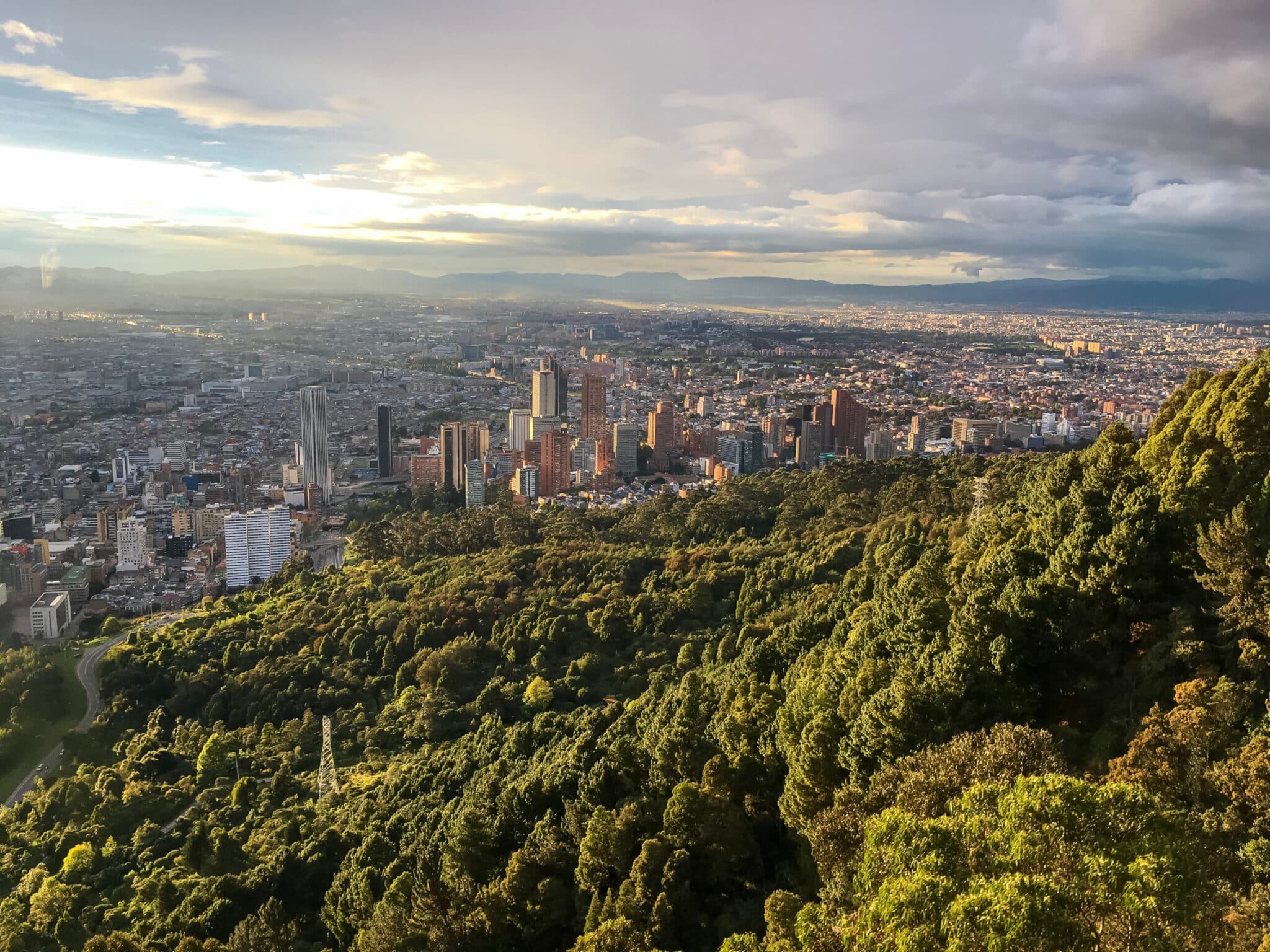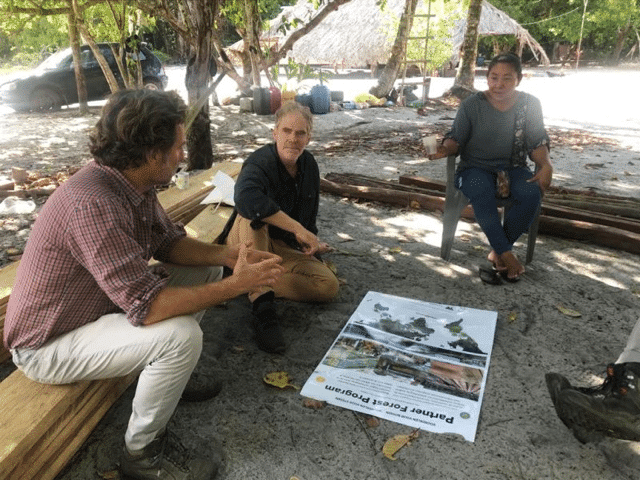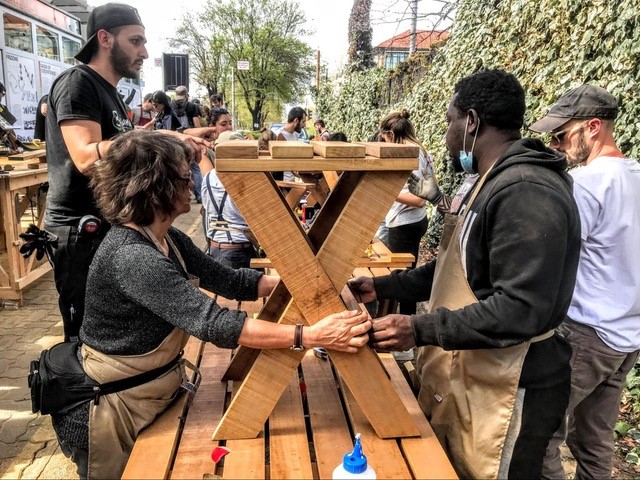Cities4Forests 2022 Year in Review: Unlocking the Power of Nature for Cities

1. We Helped More Than 50 Cities Use Nature to Improve People’s Lives
In 2022, Cities4Forests provided deep dive technical support to roughly 50 cities in more than a dozen countries — from the Atlantic Forest in Brazil to the Central African Congo basin to the American West and beyond. Cities4Forests helped our city partners with capacity-building in planning, mapping, monitoring, training, economic analysis, financial recommendations and structuring, and more. This work has resulted in new or enhanced plans, policies, and regulations — from improved urban canopy management to climate action plans to sustainable tropical wood partnerships — that protect trees, forests, and nature near and far. Examples of projects that reached tipping points in 2022 include:- In Kochi, India, Cities4Forests partnered with the city to launch a community-led urban greening movement that planted hundreds of trees across 10 urban sites to improve the climate resilience of urban residents and create a template for scalable urban restoration.
- In Salvador, Brazil, Cities4Forests and partners helped design and establish the city’s first ever public rain garden to alleviate flooding, setting the foundation for wider replication.
- In Jayapura, Indonesia, the Cities4Forests team helped to integrate Indigenous and local community knowledge into the city’s spatial plan in order to protect traditional areas.
- In Brazzaville, Republic of the Congo, Cities4Forests co-developed the city’s first-ever Urban Forest Strategy outlining priority actions to protect and expand the urban canopy while providing equitable green space access.
- In Addis Ababa, Ethiopia, Cities4Forests worked to co-develop the city’s first-ever baseline tree cover map, the city’s official “Nature Based Solutions Selection Guide for Urban Resilience” and a tree species selection guide for urban reforestation.

Information plates provide information on tree saplings at Kawaki community-led restoration sites in Kochi, India. Credit: Achu Sekhar, WRI India.
2. We Used Economic Analysis and Technical Support to Unlock Finance
Cities are increasingly aware that nature can provide a range of services (like water provision, disaster protection, health benefits, and recreation) that carry real economic value, and are seeking out finance to invest in ecosystems. In 2022, Cities4Forests helped unlock that finance by conducting economic analysis, supporting nature-based projects to hone their business plans and make themselves attractive to investors, and devising innovative financial strategies.- WRI Indonesia’s ride hail application “Emisi,” which allows urban residents to offset emissions through donations that fund forest restoration and conservation, raised nearly US$400,000 to plant 175,000 trees in biodiverse, but degraded, forests in Sumatra, Kalimantan, Java and Bali.
- Cities4Forests, WRI Brazil, and ICLEI released a publication on natural infrastructure around Campinas, Brazil showing how investment in forest conservation, management, and restoration in Campinas’ source watersheds could result in significant annual savings in water treatment for the Brazilian city and nearby municipalities while improving the population’s water quality.
- Cities4Forests and partners published a new analysis showing how cities in Ethiopia could use three mechanisms — water funds, payments for ecosystem services, and debt-for-nature swaps — to pay for nature-based investments to reduce erosion and sedimentation in upstream catchments to improve water quantity and water quality.
- In Xalapa, Mexico, Cities4Forests supported the issuance of a 2% voluntary water tariff that has already raised $250,000 for watershed restoration efforts through the local payment-for-ecosystem services scheme.
- In Northern California, Blue Forests, WRI, and partners worked to expand an innovative financing mechanism, known as the Forest Resilience Bond, that has raised over $25 million to restore 48,000 acres in the Tahoe National Forest in California to pay for fuel reduction treatments, forest health treatments, and water security interventions.
3. Cities4Forests Published the Most Comprehensive Resource Yet on How Forests Benefit Cities
Why should cities care about forests and nature? To answer that question, Cities4Forests developed Better Forests, Better Cities, the first-of-its-kind comprehensive resource on the connection between cities and forests. Synthesizing hundreds of research papers and reports, Better Forests, Better Cities explores the diverse suite of benefits to human health and well-being, water, climate mitigation, and biodiversity that forests at all spatial scales provide to cities and their residents. It also includes concrete actions cities can take to conserve, restore, and sustainably manage forests near and far.
Better Forests, Better Cities is a first-of-its-kind report that evaluates the benefits to human health and well-being, water, climate mitigation, and biodiversity that forests and other nature-based solutions at all scales provide to cities and their residents. Credit: Cities4Forests
4. More Cities Partnered With Faraway Forests
Cities are increasingly able to positively impact faraway forests through Cities4Forests’ Partner Forest Program, which connects cities with specific tropical forest areas and communities. This gives cities and forest communities opportunities to expand forest-positive businesses, develop forest-positive programs, expand knowledge on tropical forests, and more. In 2022, the program advanced by signing Amsterdam, Netherlands; Turin, Italy; Rotterdam, Netherlands; Copenhagen, Denmark; and Glasgow, Scotland as program partners. We also recently held face-to-face meetings with community forests in Suriname and Guyana, which have broadened our Partner Forest portfolio. Read more about recent successes from the Partner Forest Program in WRI Insights and Bloomberg.
In April 2022, Pilot Projects worked with Stratosferica (a local nonprofit) to help reimagine a public gathering space in Precollinear Park with unique, placemaking outdoor furniture built with conservation timber from a Partner Forest community in Gabon. Credit: Pilot Projects

A visit was made by Pilot Projects and Probos Foundation representatives to the community in September 2022 to discuss how the program could help support the economic sustainability of the community and ecological sustainability of the forest the community manages. Credit: Pilot Projects
5. Cities4Forests Publishes First-of-its-Kind Global Methodology for Tracking Emissions from Loss of Local Forests and Trees
Cities and countries across the world are increasingly inventorying their greenhouse gas (GHG) emissions and removals as part of their efforts toward greater climate action. However, many cities and counties to date have not accounted for forests and trees within their inventories, largely because their emissions and removals are difficult to track. To address this gap, Cities4Forests, WRI, ICLEI, and C40 launched the first ever global methodology to allow communities and cities to inventory GHG emissions and removals from forests and trees. We also piloted this methodology in Salvador, Brazil; Mexico City, Mexico; Jakarta, Indonesia; and Mumbai, India. In fact, the emissions and removals estimated in Mumbai’s inventory of non-forest land was incorporated in the Mumbai Climate Action Plan, which was launched in March 2022. You can read more about how cities are doing this, and why they should, in this article. You can also watch a recording of the launch event.6. Making Strides on Financing Nature-Based Solutions in Sub-Saharan Africa
Africa is one of the regions most affected by climate change. Nature-based solutions offer cost-effective solutions to scale up resilience and adaptation efforts. Cities4Forests, in collaboration with the World Bank, African Development Bank, Swedish International Development Cooperation Agency, the Green Growth Knowledge Partnership, and the Caterpillar Foundation, has undertaken a project to survey approaches to unlock finance for NBS across sub-Saharan Africa. In September, Cities4Forests participated in Africa Climate Week with key investors in African NBS, to discuss how to scale up private finance for these projects. In October, Cities4Forests hosted an NBS-expert workshop in Nairobi, Kenya with about 90 attendees, including key government officials, private investors, development partners, and community organizations. The workshop explored opportunities and challenges of NBS in the region throughout project cycles: from design and implementation, maintenance and operations, monitoring and evaluation, to replication and scaling. Findings from the workshop can be found in this blog. To establish a baseline of the status and trends of NBS projects in sub-Saharan Africa, WRI and partners have reviewed the lending portfolios of several multilateral development banks (MDBs) and other key financiers for climate adaptation in the region. In the lead up to COP27 in November, Cities4Forests and partners published the methodology to be used to create a first scan of region-wide dataset of MDB-led NBS projects. The full report will be published in 2023 and will include a comprehensive database with over 400 NBS projects, an analysis of trends, and key enabling conditions for greater NBS adoption. Additionally, Cities4Forests is working with multiple cities across the region to advance their NBS projects toward maturity in preparation for funding.
The publication surveyed the status and trends of NBS across Sub-Saharan Africa – the dataset includes 400+ NBS projects for climate adaptation. Credit: WRI/Cities4Forests
Read More About Our Work This Year
Throughout 2022, many Cities4Forests researchers and experts wrote on a range of topics that are essential to understanding the many connections between cities and forests. Examples include:- An exploration of how nature-based solutions can protect corporations from water risks.
- Lessons on the role of forests in wildfire resilience and recovery from a field tour in Oregon, the United States.
- Eight ways cities can support a transition to sustainable wood procurement and better forests management worldwide.
- An exploration of a “reforestation hub model” that allows cities to upcycle urban trees into wood products, including three cities leading the way.
What to Expect in 2023
This new year will bring new opportunities to better leverage cities’ unique position on behalf of the world’s forests and nature. We’ve already kicked off to a strong start with our new Forest Footprint methodology, which can help cities understand the emissions and deforestation created by the commodities they produce. You can read more about the methodology and upcoming dashboard in this blog. Cities4Forests initiative will also be partnering with Cambium Carbon on the Carbon Smart Wood Challenge. This challenge aims to provide resources and support to cities looking to build or enhance existing urban wood utilization programs and infrastructure. Candidate cities should share a vision of advancing wood waste diversion, innovating in the wood products sector, fostering tree equity, and building a circular economy to enable full life cycle management of the urban forest. Apply here by February 28, 2023. Cambium Carbon and Cities4Forests will work with selected Carbon Smart Wood Challenge cities to match funding and support resources to build out programs. We look forward to another year of new research, tools, and mechanisms that can help cities everywhere in this mission. If you haven’t already, sign up for our email list to get regular updates, learn about upcoming events, and more. You can also follow up on Twitter, LinkedIn, and Instagram.
Cities4Forests helps establish Salvador, Brazil’s first ever rain garden to alleviate urban flooding. Credit: WRI Brasil.










